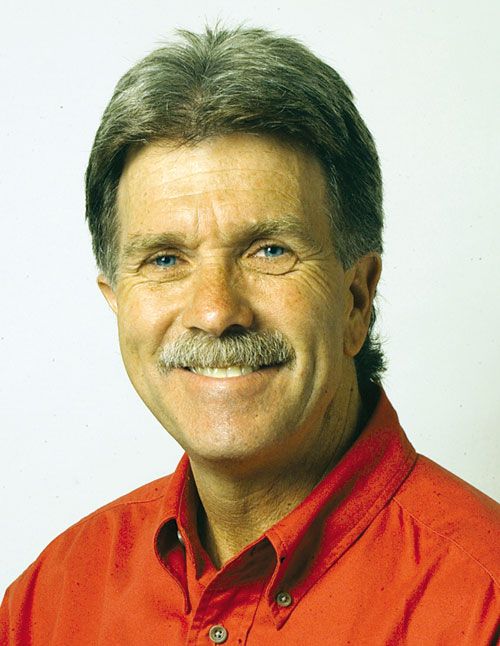Getting Out: As you drive along U.S. Route 395 through the Owens
Valley, the abrupt and amazing 10,000-foot Sierra escarpment will
blind your attention to anything else.
And why wouldn’t it? It’s not even a fair fight.
Few of us have seen the landscape leap from the flat high desert
to 14,000-foot summits
— all accomplished nearly within our reach. Out the other window
is a nearly featureless dusty landscape of sagebrush and creosote
bushes. It is easy to dismiss and pass without a second look, but
here is one side trip as interesting as the mountain views are
beautiful.
As you drive along U.S. Route 395 through the Owens Valley, the abrupt and amazing 10,000-foot Sierra escarpment will blind your attention to anything else.
And why wouldn’t it? It’s not even a fair fight.
Few of us have seen the landscape leap from the flat high desert to 14,000-foot summits — all accomplished nearly within our reach. Out the other window is a nearly featureless dusty landscape of sagebrush and creosote bushes. It is easy to dismiss and pass without a second look, but here is one side trip as interesting as the mountain views are beautiful.
Native Americans left behind art on rock outcroppings — pictographs and petroglyphs — for us to examine and contemplate. Pictographs are drawings or paintings on rock, while petroglyphs are etched into the rock. Just north of Bishop, there is a dirt road that passes petroglyphs in such numbers that I wondered if these were the ritual works of art they are purported to be — or had I entered the graffiti-ridden East Los Angeles of pre-European Owens Valley.
At the north end of Bishop, take Route 6 north toward Tonopah, Nev. Just as the road makes a 90-degree right hand turn, take a left onto Five Bridges Road. Soon after that road turns left, look for a right-hand turn onto Fish Slough Road (apparently named on a day when the Chamber of Commerce was closed). This is a dirt road, but it is wide, well graded and can be comfortably traveled at 40-50 mph.
About seven miles out, look for a parking area and rock outcropping on your left. Step out of the car, but before you walk over to examine the rocks, take a moment to just stand there and take it all in.
To the east, just above you, the White Mountains rise 14,246 feet, higher than the Sierra crest across the valley. Up there, in that brutal environment, reside Great Basin bristlecone pines that are more than 4,000 years old. On the west side of the valley, see if you can pick out the distinct shape of Mount Humphrey (13,986 feet) that dominates the Sierra crest there. The utter silence and the seemingly infinite reach of open space here is staggering.
Ramble among the rocks and you will have no problem finding petroglyphs. These are the Fish Slough Petroglyphs. They are 5,000 years old and are only an opening act for what lies ahead. Another four miles down the road, the Chidago Petroglyphs appear on your right. This must have been a favorite location of Paiute artists.
Etched images cover every inch of some rocks here. The contrast of the etchings against the dark rock is striking here as though the images are freshly carved. Finally, another handful of miles down this dirt road, you will see the Red Canyon Petroglyphs on your left.
In other places that I have seen petroglyphs, groups of visitors leaned over fences carefully protecting the etchings. The remote setting here and the easy access allow a special sense of intimacy. When you reach out and touch one of these petroglyphs, you are standing just where the artist stood, seeing just what the artist saw. Who was he? When was he there? What could he tell you?
Before taking this drive, stop by the Bureau of Land Management office at 798 N. Main Street (Route 395) or call (760) 873-2503 for a map and informational handouts. For an interesting video tour of the Fish Slough petroglyph site by the Bishop Field Office Archaeologist, go to: www.blm.gov/ca/media/video/itf/bishop-fish_slough/index.html
This road may not travel through a time machine, but it’s close.










